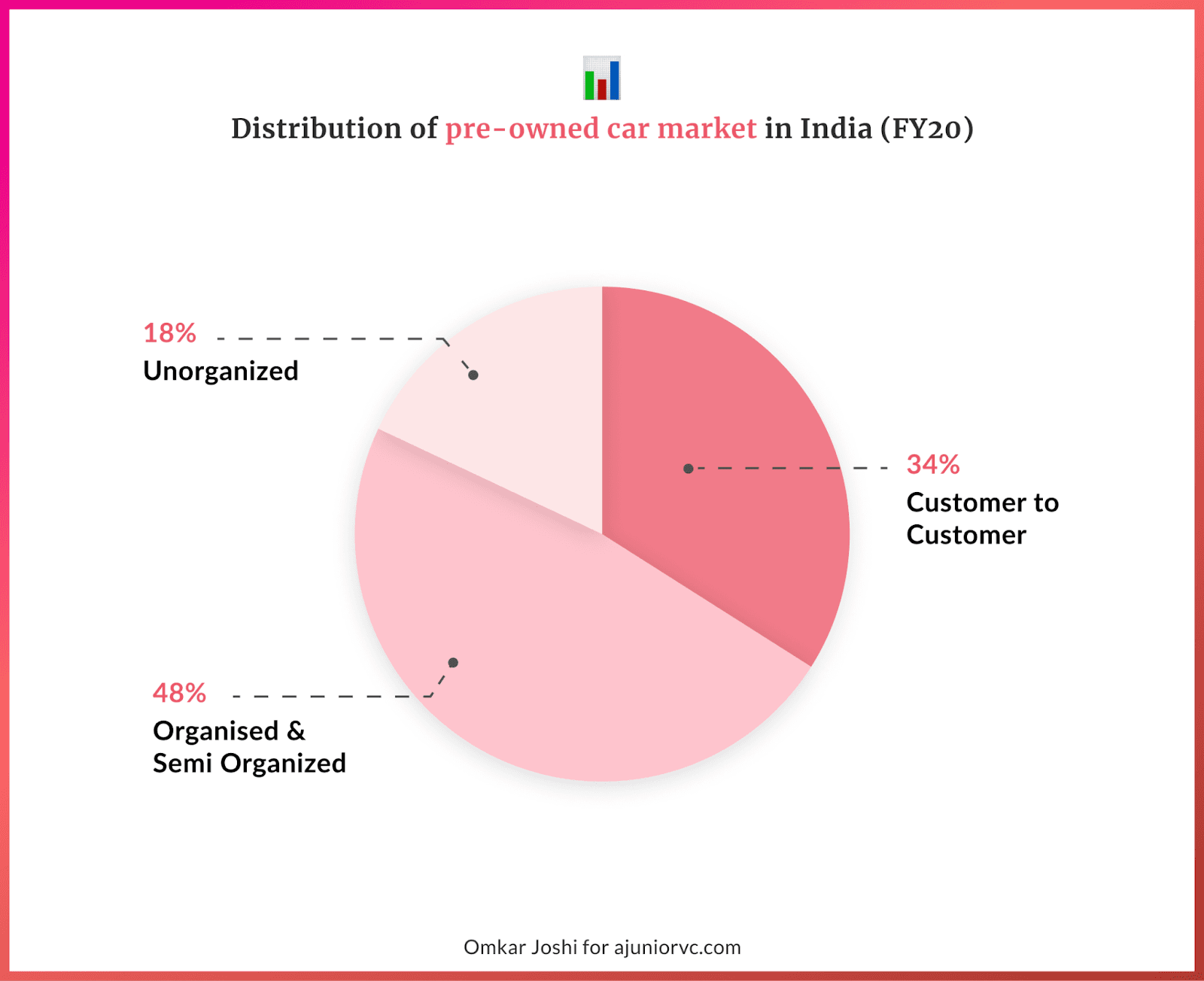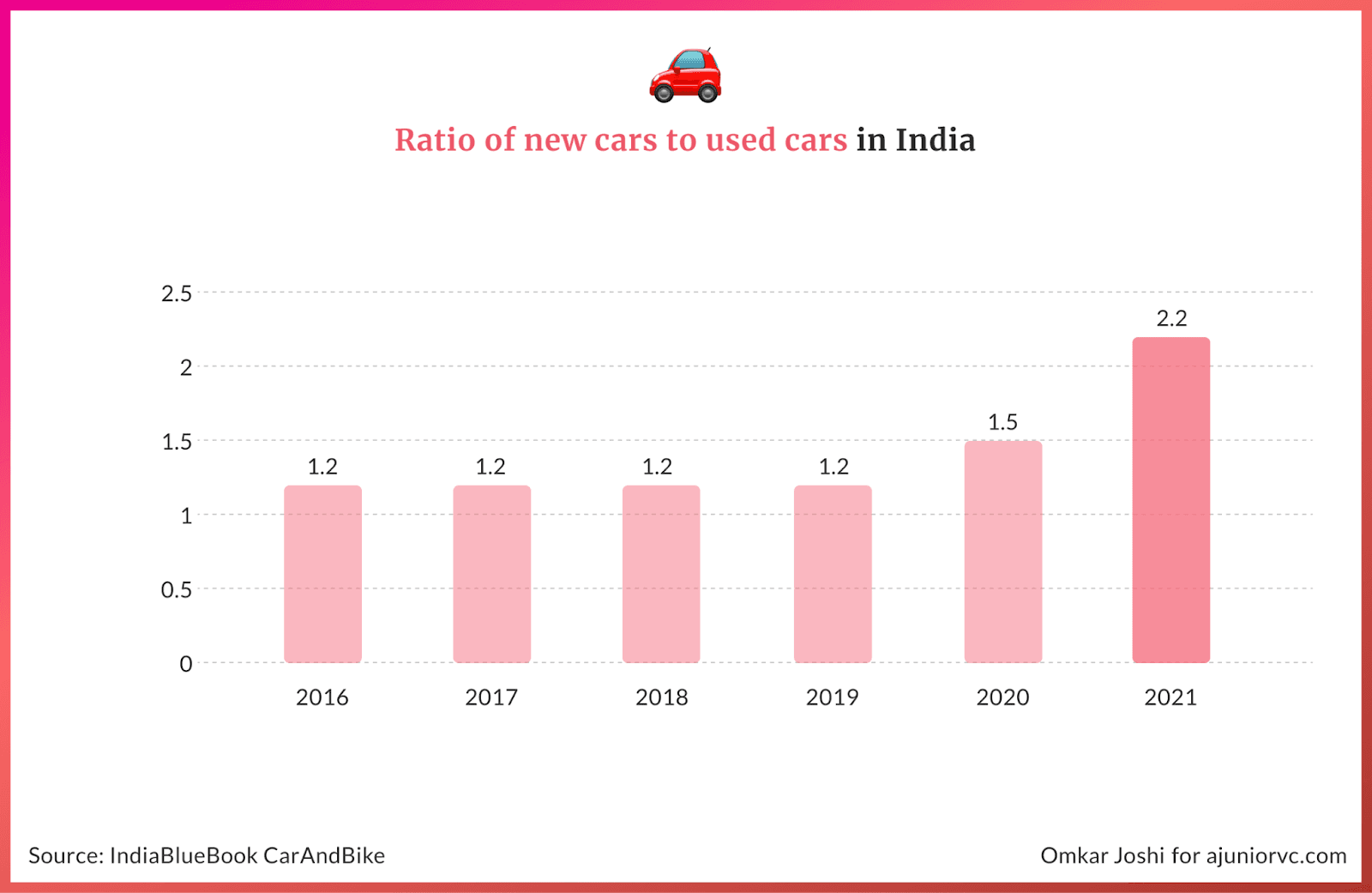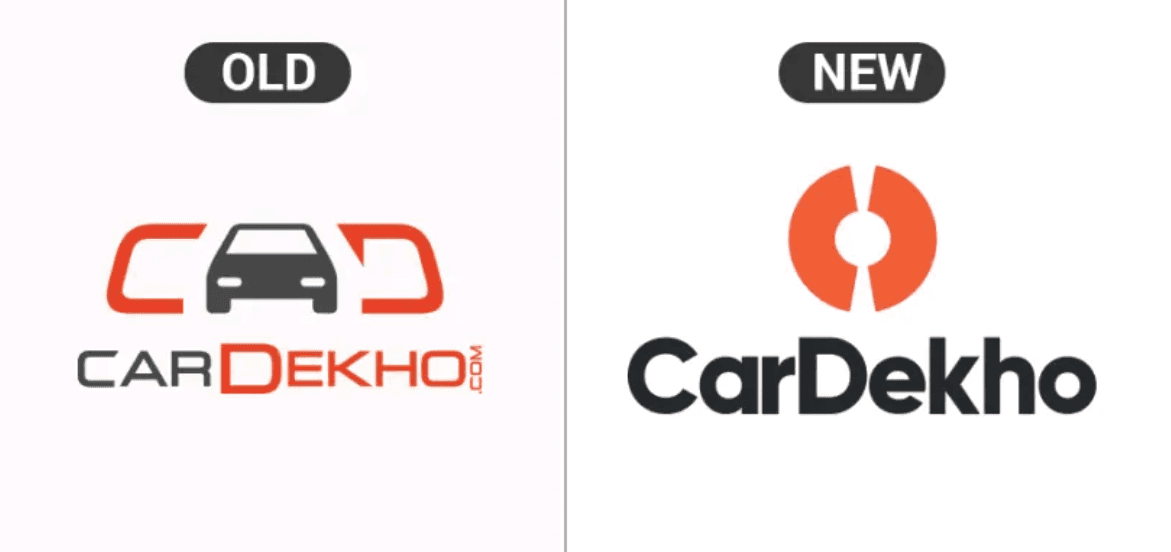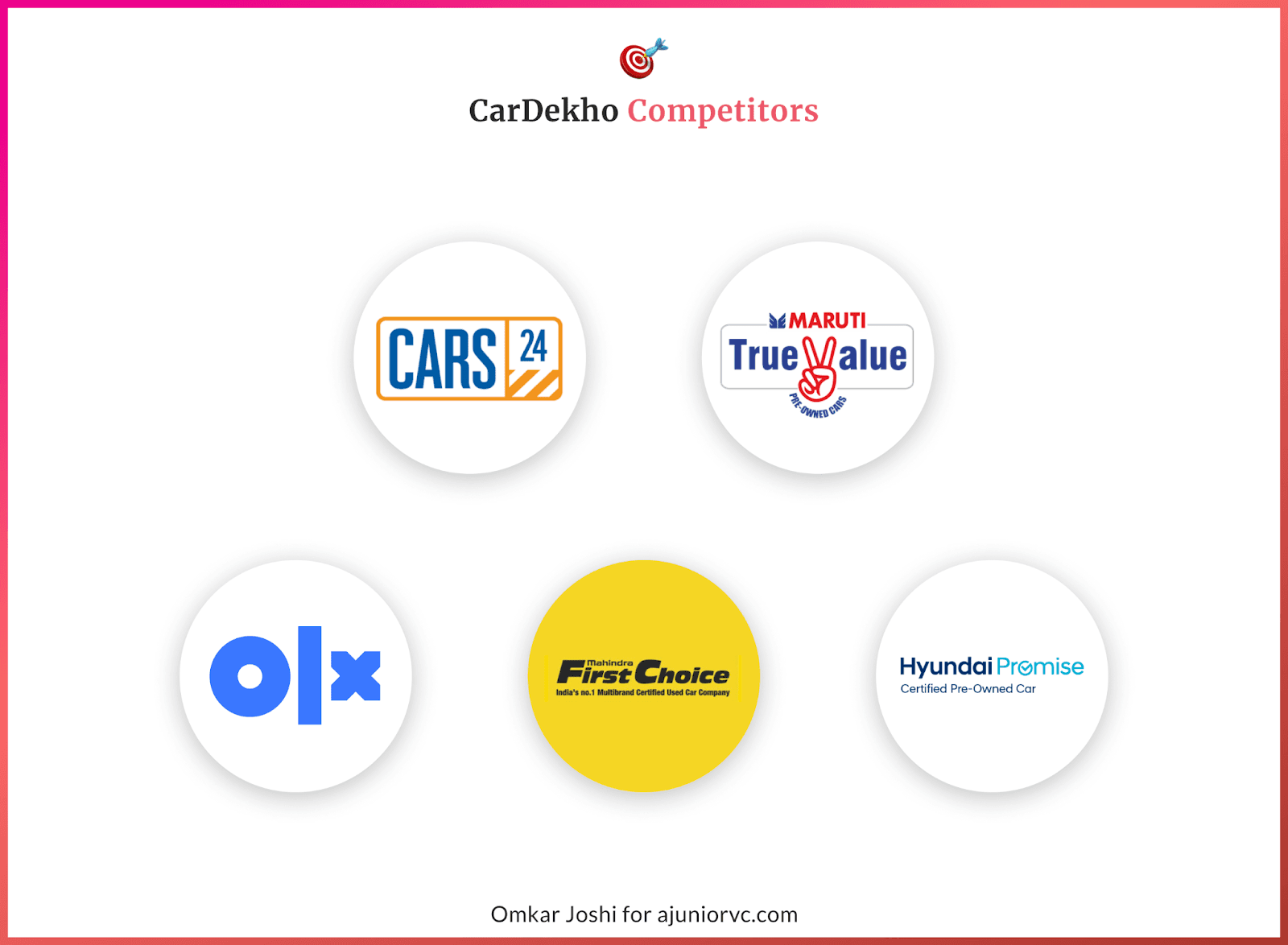
Jun 11, 2023
Is $1.2Bn CarDekho Creating a Unicorn Conglomerate?
Profile
Automobiles
Retail
Lending
Insurance
Finance
Platform
B2C
Series B-D
Last fortnight, CarDekho’s sister company InsuranceDekho completed the acquisition of IRSS, hot on the heels of a $150M fundraise in startup winter
Starry Ambitions amid Grounded Family Values
Amit Jain and his brother Anurag Jain, born on the same day two years apart, grew up in Jaipur.
They later graduated from IIT Delhi and took up software jobs instead of joining their father’s jewellery business, like many in Jaipur.
They worked for US-based companies out of their Bangalore office - Anurag in the operations research software and Amit in the insurance and automotive space.
An unfortunate tragedy struck in 2005 when their father was diagnosed with cancer and eventually lost his battle with the disease in 2006. They decided to quit their jobs, return to Jaipur, and look after their grandparents.
For them, family always came first.
Amit and Anurag had begun learning the ropes of their father’s jewellery business in 2005, but soon realized that the field wasn’t for them. After their father’s demise, they set out to clear inventory and wrap up the business.
By 2007, they decided to start something in a field that was familiar to them - software. Named after an ancient Jaipur hill, Girnarsoft was born out of their home garage in the city.

Their first projects came from their ex-bosses. The duo used their past experiences in software development and even travelled to Amsterdam to convince companies to give them a first chance.
The first project started a series of references, helping them build a steady software business.
In the first year, Girnarsoft made INR 10 million in revenue, easily surpassing the opportunity cost of their salaries.
They chose to hire fresh, hardworking, hungry folks from Tier II colleges who would form a core layer at the company and stick with them for years.
While their venture was finding its feet, the two had witnessed the steady growth of consumer internet companies during their visits to the US. They believed that India would tread the same path with increasing internet penetration.
By 2008, they started investing profits from software services into a suite of consumer services.
Portals for online astrology, silver jewellery, virtual stock trading, and eventually car sales. As they hit multiple shots, one arrow would hit the bullseye.
The final one would go on to become Cardekho.
Sharp Drive with Ears to the Ground
The idea for Cardekho emerged when Amit and Anurag visited Delhi to attend the Auto Expo.
They visited multiple stalls collecting brochures and realised there had to be an easier way to find information about the cars.
After returning to Jaipur, they began digitising these brochures, similar to another famous unicorn - Zomato. Within 2 months, they had the first version of Cardekho as a car research platform.
In 2010, India experienced significant growth in its car market, becoming the second fastest-growing market globally. Car sales rose by 31%, reaching 1.9 million units, trailing only China's growth rate.
Most of these car sales in India 2010 occurred through traditional in-person dealerships.
Amit and his team launched an online marketplace specifically for used cars in this market.
While Cardekho was taking shape, Amit quickly shut down businesses that wouldn’t work and pivoted those that needed a second shot. They shut down the virtual trading and jewellery business within 18 months. It did not mean that those businesses didn’t work, as CaratLane would go on to show
CarDekho faced early challenges in the market due to the absence of major players.
As a result, they had to overcome the hurdle of creating brand awareness. They invested in content, SEO and user experience, which generated online traffic with limited paid marketing channel spend.
The ‘research’ version of the website allowed new car buyers to compare models, look up specifications and make informed decisions on their purchase. Gradually, they added features for users to compare car models by make, price, features and more such attributes.
By 2010, Cardekho was the largest online car portal in traffic. Automobile manufacturers saw the portal as a medium for digital advertising, making this a steady revenue source.
Built by a small team and with no marketing costs, Cardekho no longer needed to be funded by the software businesses - it generated profits to sustain. Amit and Anurag were hungry to grow the business and learnt the ropes.
For example, when OEMs and agencies came asking for digital inventory on the website they needed to learn about the prices to quote or the metrics to track. They didn’t shy away from asking around or learning from others before they could make the decisions.
Soon they were selling leads - inquiries for purchase on the website - in addition to slots for advertising. They started building tools for OEMs and car dealers to manage leads, track sales, enable digital marketing, and access virtual showrooms.
They added used car classifieds, where users could list used cars for sale and buy vehicles from owners and dealers.
Iterating fast to offer what stakeholders wanted was the power boost it offered
Hitting the Accelerator
By 2012, Cardekho had seen 34 million unique website visitors, and by the end of the year, they had enabled 170,000 user car transactions.
Their growth didn’t go unnoticed for long, and investors came knocking at their door. Cardekho also started to realise that the internet was an uncertain place and to stay sustainable, they needed to build a long-term brand.
A fundraise seemed apt to fuel the long-term dreams.
The company raised a $15M Series A round in the second half of 2013. The founders' fundraising, limelight, and rise to popularity remained the same.
They switched gears and hit the pedal even harder.
They launched an Android application followed by an iOS one. The app achieved 100,000 downloads in the first month.
They expanded the team and looked to paid channels such as Google Adwords. In 2014, they doubled the website visitors and grew revenue three times.

In the same year, the company acquired Gaddi.com, a competitor about half their size, but with a better presence in the used car segment.
This was followed by the acquisition of Zigwheels from the Times Internet group. It helped them expand offerings to an editorial and reviews-focused portal to support the new cars business.
Next, they forayed into financial services and created an online banking platform enabling customers and dealers to fund vehicle purchases, especially for used cars. Banks and NBFs offered loans to customers looking to buy used vehicles listed on the Cardekho platform.
Amid the green shoots, some experiments did not work as planned.
For instance, the company invested in a startup to sell roadside assistance. They also began selling extended warranties to their car owner base. Both of these had to be shut down soon.
Iterating fast and figuring out what worked well was in the founder’s DNA. The founders realized they had to double down their time and focus on businesses that would take them to the next level.
They built a partner solutions team that engaged with used car dealerships and sold personalised classified ads. An ‘auctions’ platform helped customers and banks bid for used cars or vehicles that were forfeited.
With a core car business and financial services playing to supplement the ecosystem, Cardekho was cruising smoothly on the highway.
Nitrous to Used Cars
As India entered 2015, it emerged as one of the largest and fastest-growing automotive markets globally
It is projected to become the third-largest automobile market by 2025.
Driven by factors such as the expanding middle-class population, increasing disposable incomes, and a growing preference for personal transportation, India had solidified its position as the fourth-largest automobile market in the world, and CarDekho was patiently building its empire.
The potential for growth in a country with a population of 1.4 billion was immense because there were only 22 cars per 1,000 people, as opposed to 980 vehicles per 1,000 people in the US and 850 cars per 1,000 people in the UK.
Despite the robust growth of the new car market in India, there remained a significant untapped potential in the used car market.
Compared to developed economies such as the USA and Europe, where the ratio of new cars to used cars was 1:3, the used car market in India was relatively unexplored with the ratio being closer to 1:1.2, and the growth in the market needed to be faster.

The steady growth in the Indian used car market meant that the market was valued at $32Bn, and was expected to grow at a CAGR of 15.1% to reach $75Bn by FY28.
In the past, these sales, however, were primarily carried out by the unorganised segment and direct customer-to-customer sales. In 2004, the share of organised players like Mahindra First Choice in the used car market was four percent.
The surge in e-commerce bolstered consumer confidence in online platforms, paving the way for Cars24, CarDekho, and Droom to seize a portion of the used car retail market.
By the close of 2018, the organised sector's market share surged from 4% to around 20%, marking substantial strides in the industry.
With the used car market steadily expanding and organised players gaining traction, CarDekho has successfully driven its way to success, positioning itself perfectly for continued growth on the road ahead.
Cruising at High Speed
The company transformed from a platform for buying cars to availing the best offers on purchasing old or new cars and options for insurance and finance.
To match the many ways in which the company can help its customers, CarDekho rebranded itself with a new logo. This logo is almost a circle, but the two cuts slice away 40 degrees.
This mimics the field of view of the human eye, which is about 160 degrees.

Simultaneously, they came up with a new slogan Chalao Apni! as they introduced a new feature of 360 views of the car, which helps fulfil the company’s promise to help customers find the Right Car, Right Now.
With a focus on acquiring customers offline, CarDekho launched Gaadi by CarDekho in January 2019 after it acqui-hired Carbiqi when it forayed into the auction model.
By October, they had 50 stores across the country and had plans to open 200 stores by 2020. CarDekho Gaadi stores also help customers with RC transfers, loan closure assistance, instant money transfers, and scientific car inspections.
It strengthened its presence in Southeast Asia by adopting a similar strategy to build their business as they did in India.
CarDekho began to operate in Indonesia through various ventures: ZigWheels.com, Powerdrift.com, BikeDekho.com, OTO.com, CarDekho.com and Gaadi.com. In November 2019, it acquired the online car classifieds site Carmudi Philippines to expand its services in the Philippines.
They decided to focus on these countries as the GDP/per capita of the top 5-6 countries in Southeast Asia was similar to that of India. At the same time, the competition was less intense. They could have better unit economics than the average vehicle price and higher interest rates for auto finance than in India.
By 2020, as COVID-19 devastated the country and tightened social-distancing norms, CarDekho pivoted into the home-inspection model and started shutting down numerous Gaadi by CarDekho stores. The company believed the home inspection model would be more efficient for its business model.
COVID would provide a hockey stick boost to the market.
During the COVID-19 lockdown in India, the automotive industry faced severe challenges, resulting in significant financial losses. The pandemic-induced restrictions and disruptions in supply chains and consumer demand profoundly impacted the Indian automotive sector.
As the pandemic caused financial constraints for many buyers, they started seeking alternatives to purchasing new cars, such as used cars and 2-wheelers.
The pre-owned car market recorded sales of 4.4 million units in the financial year 2020 compared to only 2.8 million units of new passenger vehicles in the same year. The ratio of new cars to used cars in India shifted from 1:1.2 to 1:1.5 in 2020, indicating a higher demand for used cars.
In this situation, to give the users an immersive experience of the car model, CarDekho.com launched many innovative features like the ‘Feel The Car’ tool.
This tool gave the car a 360-degree interior/exterior view, complete with sounds and explanations about its features through videos. This gives a greater understanding of the features of a specific vehicle. Users can now search and compare cars by make, model, price, and features.
The company had hit top gear and was cruising. But making money was not going to be without roadbumps.
Highway to Profit
CarDekho was not satisfied with only being a used-car market player
Since its establishment, CarDekho continued to diversify its revenue sources. The team displayed patience deep business understanding of the automotive market and expanded their services to include mobile, bikes, and trucks.
While Cardekho was trailblazing the online car business, they also started to plant seeds for the fruit they would harvest 4 - 5 years later.
They launched InsuranceDekho in 2017, a portal to sell online auto insurance. While this was steadily gaining traction, it would become a significant growth lever in a few year's time by diversifying into health insurance.

InsuranceDekho facilitated instant car loans and partnered with insurance companies to provide car insurance schemes.
CarDekho effectively diversified its revenue sources by tapping into the used and new car markets. This diversification strategy proved successful, especially during the COVID-19 pandemic when people turned to buying used cars as a financially viable option.
In FY21, while other verticals experienced stagnant growth, the used car revenue vertical saw a remarkable surge of 67.4%. It generated approximately Rs 489 crore in revenues, compared to Rs 292 crore in FY20. This growth in the used-car selling platform contributed substantially to CarDekho's overall revenue expansion.
CarDekho's platform follows a model where it purchases cars from its users and then sells them to dealers nationwide, generating revenues from this process.
However, this activity represents the most significant cost centre for the company in FY21. The cost of this process grew by 66.2%, reaching nearly Rs 481 crore from Rs 289.4 crore.
These costs accounted for 37.6% of the company's total annual expenses.
Revenues grew and crossed Rs. 1600 crore in FY22 - an 80% increase. Selling used cars remained the most significant chunk, accounting for 50% of the pie.
This was followed closely by advertising and digital marketing solutions provided through its various platforms, such as Pricedekho, Bikedekho, Zigwheels and Gaadi and Insurance Dekho. This was a high-growth segment, surging 2x since the previous fiscal.
The revenue growth came at a cost. Expenses increased by 70% to hit Rs. 2170 crore, with the most significant share from purchasing used car inventory.
Overall, the bottom line got healthier. EBITDA margins and ROCE increased by a few percentage points, signalling a trend in the right direction.
However, on the path to profitability and an IPO, Cardekho might have to look too long beyond the used car lever.
Given the thin margins in the category and increasing customer acquisition costs, it must quickly crack open some of the other lines of business.
Although the used car segment offers higher ticket sizes, the margins are comparatively lower than new car sales. Consequently, CarDekho has been acquiring more customers to increase sales volume. By doing so, they aim to leverage economies of scale and spread out their fixed costs, allowing them to maximise their profits in the face of lower margins.
Despite the auto-tech industry's losses, companies like CarDekho have dedicated five to seven years to building customer trust.
As the shift towards online car purchasing gains momentum, the groundwork laid in building customer trust positions companies like CarDekho to benefit from this evolving market trend.
Winning Trust to Become a Large Auto Player
CarDekho stands as an innovator in the digital car marketplace, not merely content with following the industry standard but revving up with its emphasis on user experience.
If we look at other industry players such as Droom, Cars24, focused on pushing their inventory. In contrast, CarDekho concentrates on perfecting the customer's journey, understanding that a happy customer is the most powerful competitive advantage in a saturated market.
They fine-tuned their website to provide an uninterrupted and intuitive browsing experience, putting themselves in the shoes of their users.
CarDekho believed that a hassle-free and engaging browsing journey, akin to a peaceful Sunday drive, thus increasing the probability of successful transactions.
They understood that building trust is as much like maintaining a reliable car; it takes consistent performance and honesty.
They furnished their platform with comprehensive and accurate information, positioning CarDekho as a dependable advisor that users could trust in their car-buying expedition. Trust was crucial to compete with its online peers and the offline dealers who had built it over decades with consumers.

This strategic emphasis on the user experience didn't just pay off, it yielded dividends.
CarDekho saw its customer base grow steadily, with 32% being repeat customers impressed by their previous experiences on the platform.
By 2021, CarDekho's platforms saw 85% of prospective car buyers in India visit their platform before finalising their purchase decision.
Word-of-mouth became a valuable ally, as satisfied customers shared their experiences with friends and family, becoming brand ambassadors and driving organic traffic.
Knowing that a car purchase is often a significant financial decision for customers, CarDekho placed enticing deals and discounts into the mix. These incentives caught the attention of cost-conscious buyers and enticed them to purchase.
Beyond driving immediate sales, offers contributed to customer satisfaction, creating a perception of value for money that added to CarDekho's overall appeal.
Securing unicorn status in 2021 with a $250 million Series E round was the coup de grâce for CarDekho's strategy. This significant milestone was not just an accolade.
This milestone was the first one for a Rajasthan-born startup. Indeed a proud moment for the ecosystem.
With nearly 60 million unique visits to their platforms by 2021 end, CarDekho solidified its position as a dominant player in the Indian Autotech industry.
As CarDekho became the cash cow the founders looked at building other verticals to take them to the same heights as Cardekho in the long run.
Driving with the Sharks
After the successful funding, CarDekho embarked on a new journey.
In April 2022, after InsuranceDekho’s success, CarDekho unveiled ambitious plans to pump $100M into its fintech brainchild Rupyy.
Rupyy, a financial services platform, would change the game for automobile financing. No more complicated paperwork and endless waits. With Rupyy, the road to owning a car became smooth, like a perfectly paved highway.
Since its inception, Rupyy has been on the fast track, leaving traditional auto-financing in its rear-view mirror, crossing Rs. 500 Cr disbursal in Dec 22. Rupyy revved up its engine with plans to accelerate to Rs 20,000 crore in annualised disbursements by FY24.
To achieve that, Rupyy needed to broaden its lending scope.
Rupyy is focusing on the nascent electric vehicle (EV) sector. Recognising the high-voltage potential of this rapidly growing market, the company is currently drawing up plans for pan-India tie-ups with Original Equipment Manufacturers (OEMs) in the EV arena.
It’s clear that when it comes to EV financing, Rupyy aims to lead the charge. Meanwhile, CarDekho's helm, Amit, was gearing up for a different adventure.
In 2023, he became a 'Shark' on Shark Tank India. This shift was like moving from the driver's seat to the control tower, with a bird's eye view of the future of innovation.

Amit was not just there to participate. He was there to invest, mentor, and build.
Amit's investment in 24 startups for Rs. 10 crores (~$1.2 million) illustrated his commitment to fostering innovation and entrepreneurship in India.
His Shark Tank journey did more than enhance CarDekho's brand visibility. It connected CarDekho to a broad network of emerging businesses and innovative ideas.
This wasn't just an investment venture; it was a strategic alliance, a bid to stay ahead of the curve in the ever-evolving auto industry.
The year 2023 turned out to be a monumental one for the group.
CarDekho, published their fiscal results for FY22, boasting an impressive 81% surge in consolidated revenue. Revenues grew from Rs. 884 crore in 2021 to Rs. 1,598 crore in FY22. The group also braked their total losses by 28%, bringing them down to Rs. 246 crore in FY22 from the previous FY21's figure of Rs. 341 crore.
InsuranceDekho, fueled by robust business performance, managed to clinch a staggering $150 million - the largest Series A round.
But for InsuranceDekho, this was just a pitstop on their financial highway. Keeping their foot firmly on the accelerator, they acquired Verak, a firm specialising in SME insurance distribution, on April 23.
But the founders are hustlers. They are seeking seamless opportunity integration within the auto, finance and insurance segments.
See You in the Rear View
GirnarSoft had started as an IT services company but now had a user car platform, an insurance tech business and an auto financing company.
While Girnar has been in the car business for over a decade, insurance is another beast.
Insurance policies often overwhelm customers with endless paperwork and confusing legal language. Then along came the insurtech pioneers, reshaping the narrative of the insurance sector.
According to the IRDAI, yearly life insurance premiums in India are expected to rise to a colossal Rs. 24 Lakh Cr ($317.98 billion) by 2031.
InsuranceDekho was an eager learner, studying the strategies of the original industry giant, LIC.
It assembled a potent network of 80,000 points of salespersons (PoSPs), aiming to penetrate 98% of India's postal codes with non-life insurance products.
This approach has its roots in 2015 when the IRDAI ushered in a new era by introducing the Point of Sales Persons (PoSPs) distribution model.
This innovative model allowed firms to employ individuals from various backgrounds, equipping them to market pre-underwritten insurance products.
InsuranceDekho rose to the challenge, eager to transform the insurance landscape. It had secured a crucial broking license, establishing a leading position in the emerging story of PoSP-based insurance distribution.
By FY 2022, InsuranceDekho had achieved a significant milestone, amassing a total premium of Rs. 1,057 crores.
However, the road ahead is fraught with challenges.
Competing against well-established players like Acko, Digit, and Turtlemint, InsuranceDekho will need more than a parental legacy and a robust plan. Though they've entered the insurance arena late, they understand that a successful race isn't just about a quick start but strategic navigation throughout.
However, as any seasoned driver knows, it's not always about who gets the jump off the starting line but who manoeuvres best throughout the race.
It remains to be seen if it will handle the tight corners and high-speed challenges on the insurtech track just like on the Autotech highway. It won't be a leisurely Sunday drive, that's for sure.
But Girnar is unique because it is creating a conglomerate.
While its focus is auto, it appears to be using it more as a launchpad into large verticals. InsuranceDekho has diversified out of auto insurance, and likely Rupyy will too.
Looking at CarDekho's rear-view mirror, it aims to apply lessons from its progenitor's success story: putting the customer in the driver's seat, creating a trustworthy brand, and staying ahead in the innovation fast lane.
Drawing parallels with their humble beginnings in a garage, both CarDekho and InsuranceDekho have journeyed far. Adding Rupyy to the mix has only made things more interesting.
Amiit and Anurag’s journey is a vivid testament to the unyielding, relentless hustler spirit that propels these ventures forward.
Beginning with just a sprinkle of dreams. Starting as an IT services company, they've ignited a revolution that's set the auto industry ablaze using IT as a launchpad. Using CarDekho as a pad, it launched InsuranceDekho. Rupyy is using the learnings of ID.
The trio is now worth $1.7Bn, a formidable size. With dreams from Girnar, the group could create an Indian unicorn conglomerate.
Writing: Keshav, Mitali, Parth, Rajiv, Ritika and Aviral Design: Chandra and Omkar